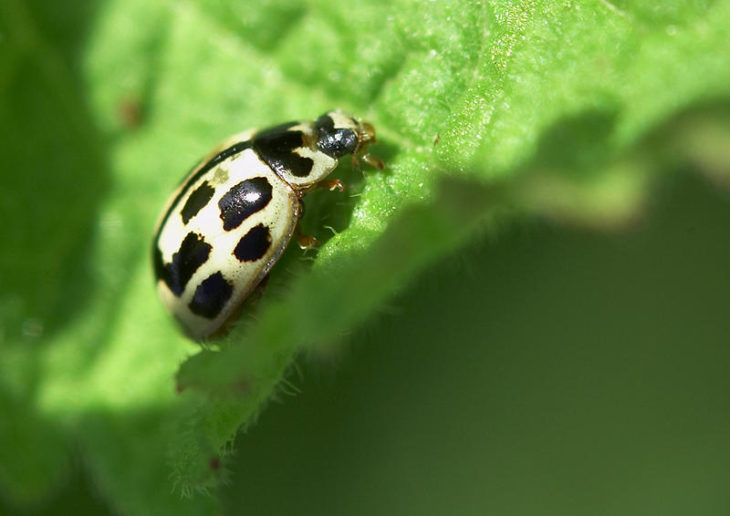Learning about ladybirds
Ladybirds are the focus of this week’s article, mainly because this year I have seen more ladybirds this year than ever before! In the UK we have 46 species but only 26 of these are readily recognised as ladybirds, the others are small and unspotted and don’t look like the ‘traditional’ ladybird.
My first tip for identifying British ladybirds is to download the ‘iRecord Ladybird’ app onto your phone. It has all 26 ladybird species with photos, information about how to identify them and a distribution map. You can identify your species in the field and submit a record on your phone at the same time.

Adult ladybirds can be found at any time of the year, although more tend to be seen between March and September. Ladybirds are diurnal (active during the day), but the weather and time of year effects when they are most active and more likely to be seen. The best time to look for ladybirds is between 10am and 4pm on a sunny day.
Like other insects – different species of ladybird favour different habitats and host plants. Good habitats for ladybirds include trees, hedgerows and low herbaceous plants such as nettles. Deciduous trees generally have a different suite of species to coniferous trees. Coniferous trees, and Scots pine in particular are more to several of the more specialist species and so are worth looking at. Earlier in the year I found a striped ladybird under a Scots pine tree, when checking the app, its habitat was Scots pine woodland and its host plant is Scots pine!
One thing I hadn’t realised when I began identifying ladybirds was that there is a wide variation within species. For example our most common ladybird, the 7-spot can have between 0-9 spots but nearly always has 7. Have you seen any ladybirds this year? Send us your photos – fallsofclyde@scottishwildlifetrust.org.uk!
Laura Preston, Falls of Clyde Ranger
Help support our vital work and join us today!
Help protect Scotland’s wildlife
Our work to save Scotland’s wildlife is made possible thanks to the generosity of our members and supporters.
Join today from just £3 a month to help protect the species you love.
Preface
Ladybirds are the focus of this week’s article, mainly because this year I have seen more ladybirds this year than ever before! In the UK we have 46 species but …
